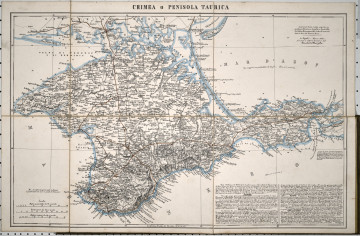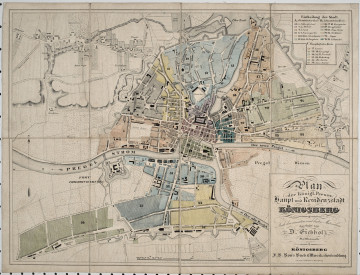
Carta della Crimea col piano delle operazioni di assedio al Sud di Sebastopoli
1855
Castle Museum in Łańcut
Part of the collection: Cartography
The 19th century was only a time of the industrial revolution, scientific and technical progress, and development of the state administration, but also the rise of people travelling the continent and beyond it. In the so-called “century of steam”, there was a rapid increase in the population of cities. The first cities with a population of a million appeared in Europe. This resulted in greater demand for detailed city plans. In maps such as the city plan of London presented here, the most important locations have been marked – the royal palace, office buildings, and hospitals. For the first time, the map includes the routes of the London omnibuses – vehicles that carried multiple people, maintaining regular transport. The map was made and published was George Frederick Cruchley (1797–1880), a British mapmaker and publicist, who worked in London. His publishing house printed maps of, among others, Ireland, Scotland, as well as “The Great Map of Europe”. The new plan of London dates back to the second half of the 19th century. The map is foldable and stored in a cardboard case, which bears the old signature of the Potocki castle library. The Counts Potocki – like most Polish aristocrats – travelled extensively, hence a large collection of plans and maps has survived. Łukasz Chrobak
Author / creator
Object type
Cartography
Technique
flat print
Material
paper
Creation time / dating
Creation / finding place
Owner
Castle Museum in Łańcut
Identification number
Location / status

1855
Castle Museum in Łańcut

1877
Castle Museum in Łańcut

19th / 20th century
Castle Museum in Łańcut
DISCOVER this TOPIC
National Museum in Szczecin
DISCOVER this PATH
Educational path